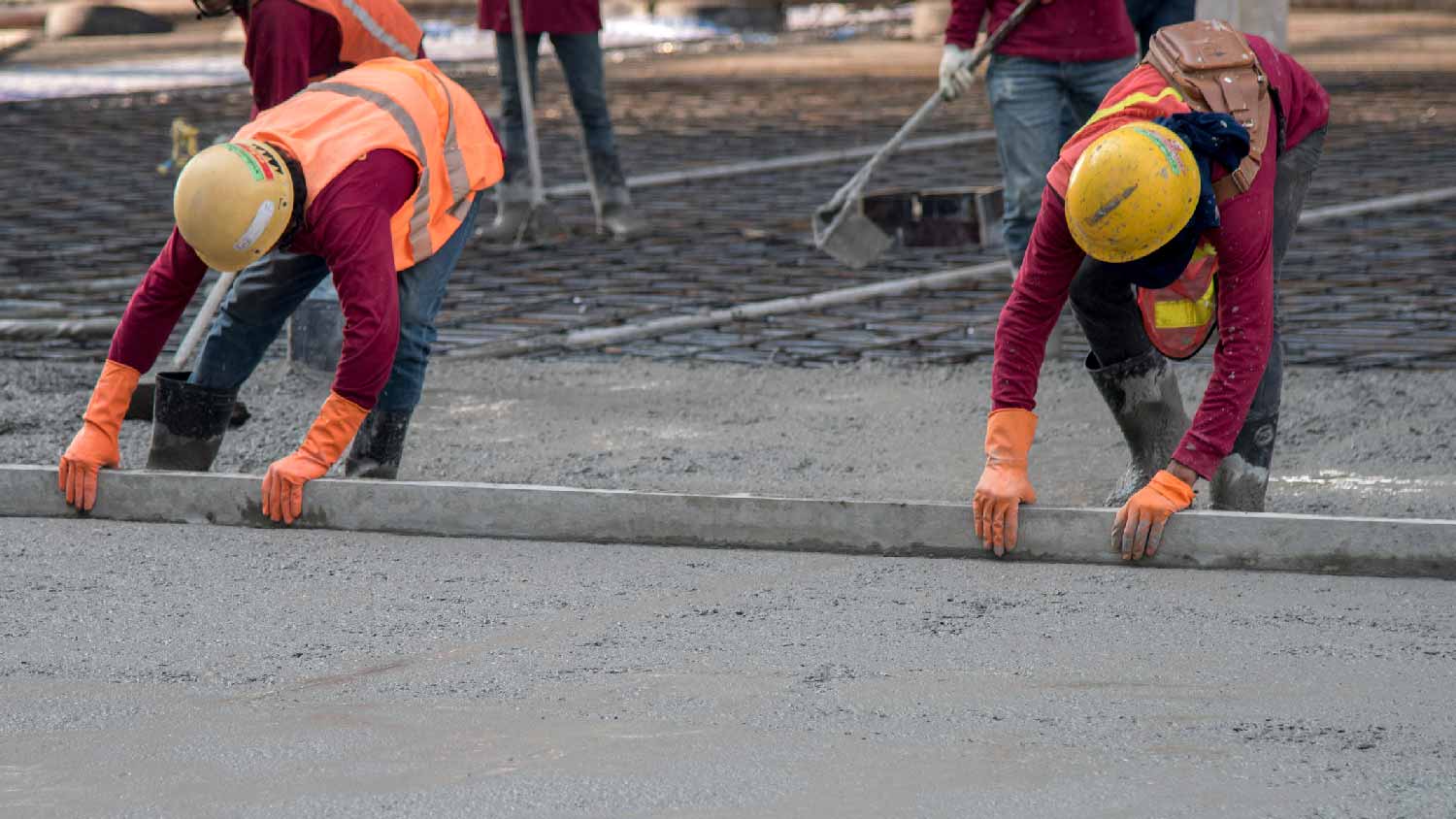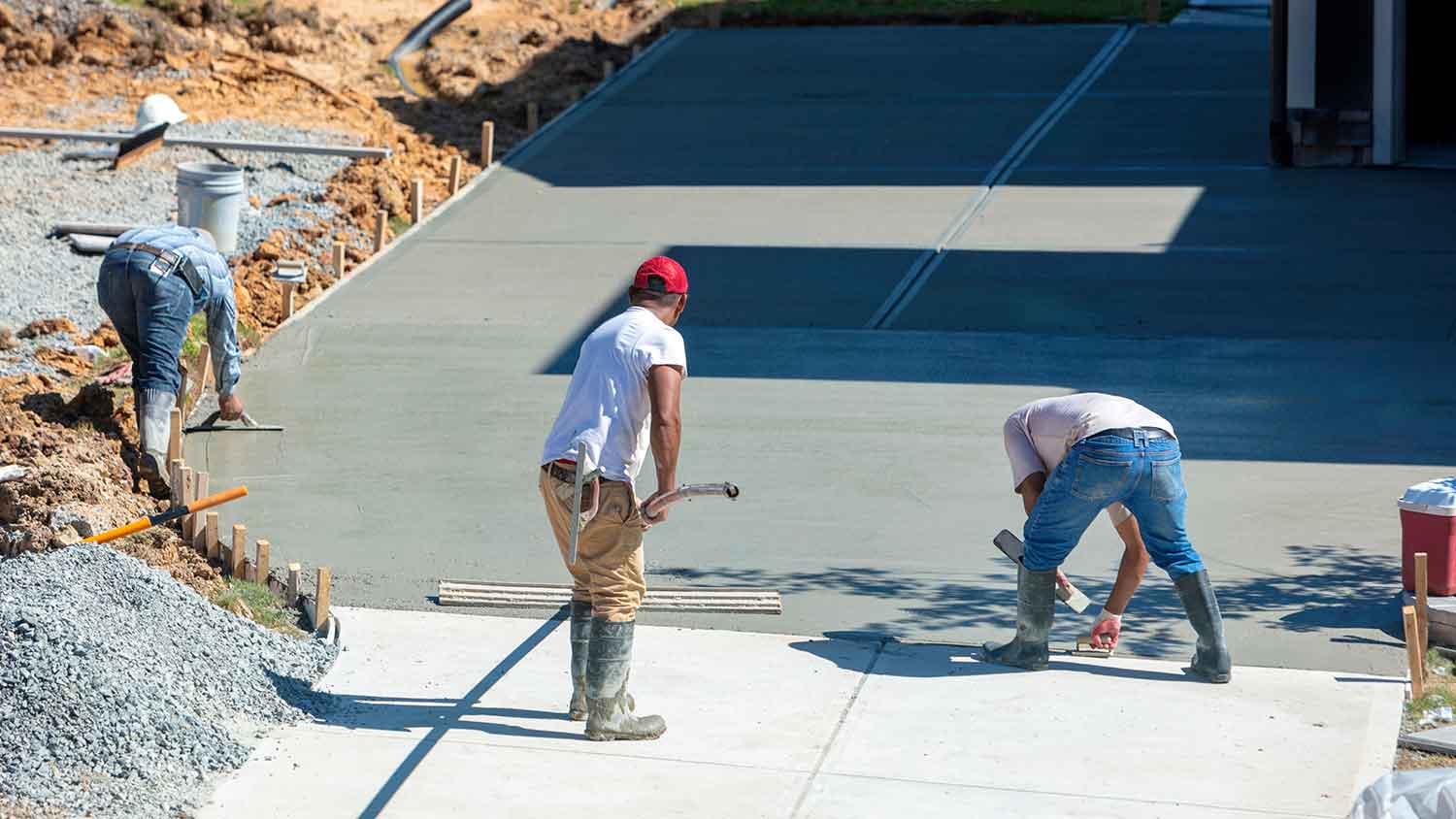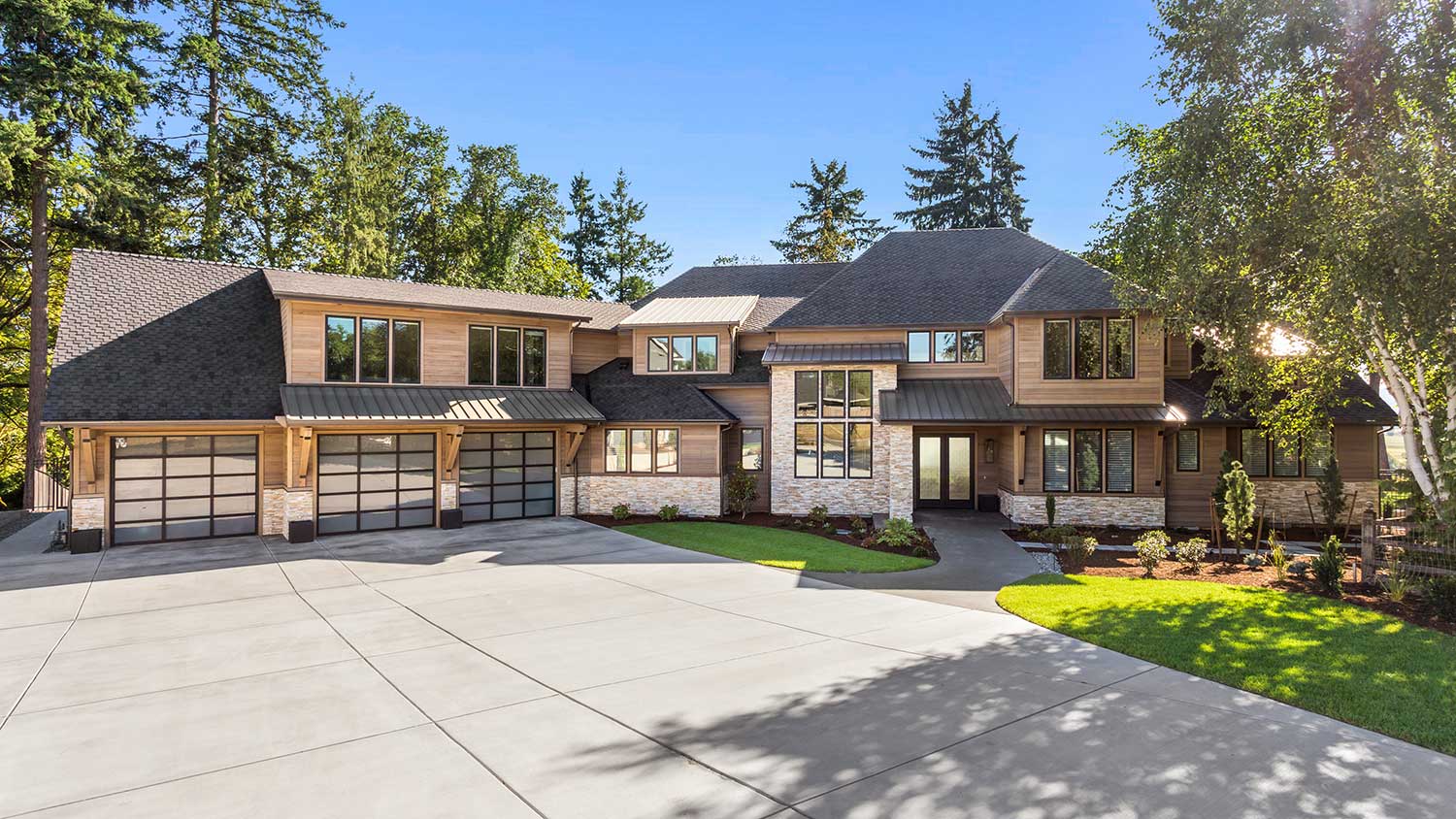
Discover how much concrete walls cost based on factors like their size, material, location, design, and local labor rates.
It's not uncommon for concrete to crack under pressure


Concrete shrinkage cracks are very common when curing concrete.
The cracks form due to the uneven evaporation of water throughout the mixture.
While you can repair concrete shrinkage cracks, they won’t affect the structure of the slab.
Even the most experienced contractor ends up with cracks in freshly poured concrete. But what exactly are concrete shrinkage cracks, and why are they so hard to avoid? Fortunately, while ugly, these naturally occurring cracks do not affect the structural integrity of the slab. That being said, it's good to know how to avoid concrete shrinkage cracks to keep your driveway looking its best.
Concrete shrinkage cracks are non-structural cracks that form during the concrete drying process. Concrete is a mixture of water, cement, and various aggregates for strength and appearance. As concrete dries, the water in the top layer of the slab will naturally evaporate more quickly than the bottom half because it’s exposed to sun and air.
During this process, the concrete naturally shrinks as it loses moisture, but not at the same rate throughout the slab. The imbalance causes what is known as tensile stress—or the force on an object when something is stretched. The stress on the top of the slab is greater than the stress at the bottom, causing the concrete to crack.
Your local concrete company may take several precautions to keep shrinkage cracks from forming. They might delicately time out the installation with the weather, place wind blockers around your concrete on windy days, or add expansion joints to encourage cracks in one concentrated spot.
It's important to note that shrinkage cracks only occur as the concrete dries. They are quite common and very tricky to avoid. Thankfully, they are not a threat to your concrete's strength. However, since there are other types of concrete cracks, it's important to know their differences.
Concrete shrinkage cracks are:
Hairline in width
Hard to see from afar
Only sit on the surface of the concrete
Concrete shrinkage cracks are not:
Thicker than 3mm
Higher on one side of the crack
Continuous from one side to the other
Accompanied by breakage

The major cause of concrete shrinkage cracks is the evaporation of water at uneven speeds throughout the mixture. While there isn't much you can do to prevent it, a few factors can exacerbate concrete shrinkage and lead to larger and more widespread cracking. Here are some ways to prevent concrete cracks from shrinkage.
Learning how to mix concrete may be a simple DIY, but it's easy to throw off the balance between water and solids. Too much water in concrete will lead to higher evaporation and more tensile pressure as the mixture sets. While it's best not to cut down water too much—this can lead to consistency problems—be sure to create the ideal mixture for your project needs.
Avoiding concrete shrinkage cracks all comes down to even evaporation. If you choose to pour the concrete on a hot day in an area with direct sun, you could end up with rapid evaporation and more cracks. The ideal temperature to pour concrete is between 50 and 60 degrees Fahrenheit, ideally when the sun is not at its peak.
Remember that both heat and airflow can play a role in concrete shrinkage cracks. Whenever possible, avoid pouring concrete on days with high winds. The quick motion of the air will set the top layer of concrete even faster, leading to more tensile cracks.
Shrinkage cracks are quite small and do not pose a threat to the structure of the slab. That being said, they're not the most attractive addition to a new floor or driveway. Repairing concrete cracks yourself, particularly small ones such as these, is an easy DIY.
The top concrete slab repair methods include:
Covering the cracks with an epoxy or concrete crack filler and using a putty knife to smooth the surface.
Resurfacing your concrete driveway with a DIY concrete repair kit and power resurfacer.
Applying a finishing sealant to your concrete to hide the cracks.
You can also call a professional to repair concrete cracks if you're concerned about the final appearance of your slab. Not only can they enhance the look of your concrete, but they can also offer tips on how to prevent further damage from occurring in the future.
From average costs to expert advice, get all the answers you need to get your job done.

Discover how much concrete walls cost based on factors like their size, material, location, design, and local labor rates.

Looking to spruce up your home’s exterior and add some value? Use this concrete walkway cost guide to estimate the price of installing new paths.

Discover the average concrete pumping cost, including key price factors and tips to help you budget for your next concrete project.

Pervious concrete can solve drainage issues and provide environmental benefits. Learn more about pervious concrete to decide if it’s right for your home.

Discover the average driveway resurfacing cost, key price factors, and tips to save money on your project. Get expert insights to plan your driveway resurfacing.

Cutting concrete is a daunting task unless you have the right tools and know-how. Find out the methods for how to cut concrete for all skill levels.